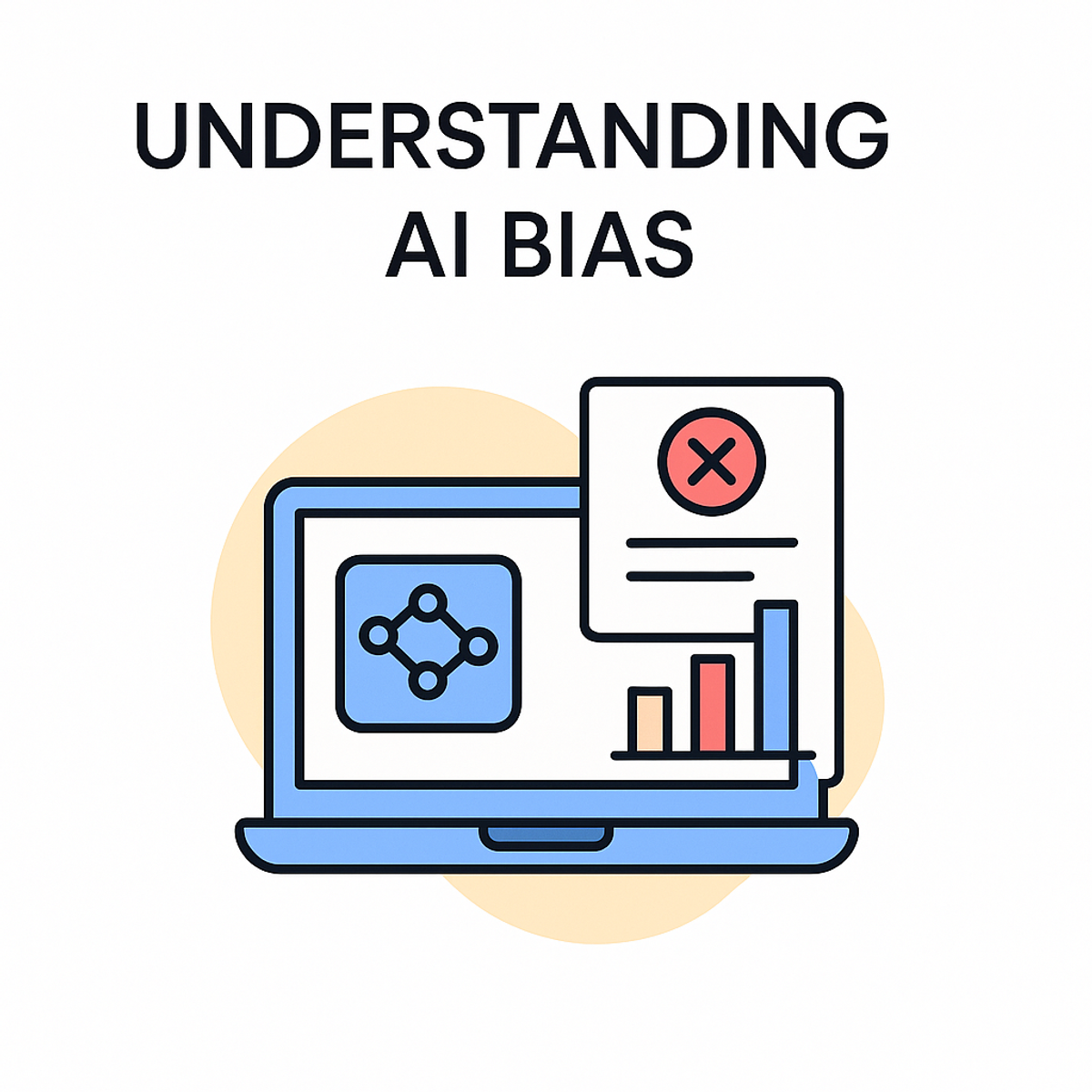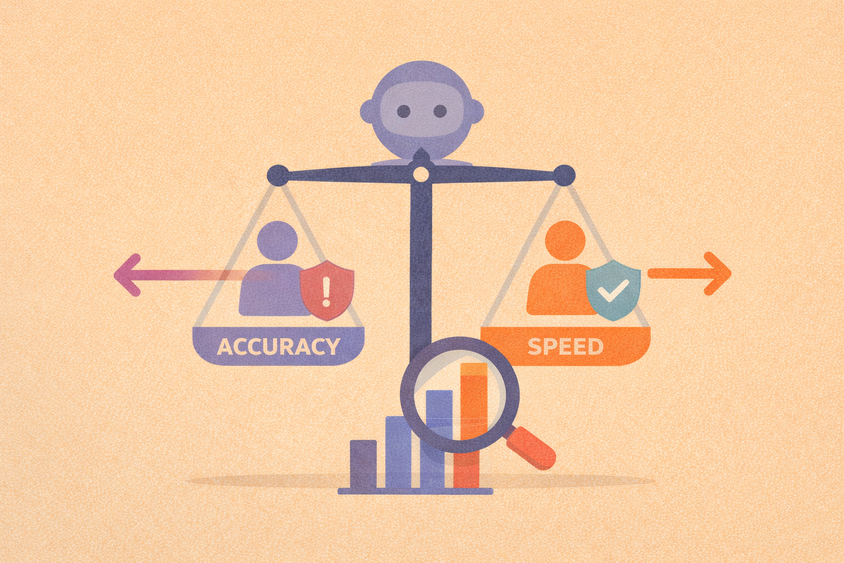Understanding AI Bias: Why It Matters in Machine Learning Evaluations

In recent years, "AI bias" has gone from a research paper footnote to a mainstream concern, prompting questions about fairness, representation, and trust in machine learning systems. But what exactly is AI bias, how does it emerge, and why is it so important to understand—especially when evaluating models for real-world use?
Whether you're training a sentiment classifier or deploying a vision model in healthcare, bias can quietly skew results, penalize underrepresented groups, and even erode the reliability of your evaluation metrics. This blog offers a grounded look at what AI bias is, why it’s more than just a data problem, and how it plays a central role in model evaluation workflows.
What Is AI Bias?
AI bias refers to systematic errors in a machine learning model’s predictions that stem from imbalanced or flawed data, model assumptions, or the context in which the model is trained and deployed. It's often described as a discrepancy in how a model performs across different groups—for instance, when a facial recognition system works well for lighter-skinned individuals but struggles with darker-skinned ones.
Importantly, bias in AI doesn’t necessarily mean intentional discrimination. More often, it’s a byproduct of the data that models are trained on. If a training dataset contains mostly data from one demographic, the model may learn to generalize only to that group, performing poorly elsewhere. This isn't just a technical hiccup—it can have serious consequences, especially in high-stakes domains like hiring, lending, or healthcare.
Where Bias Shows Up in the ML Lifecycle
Bias can creep in at many points in the machine learning pipeline. Some common areas include:
- Data Collection: If your training data doesn't reflect the diversity of the real world, your model won’t either. For example, a speech recognition model trained mostly on American English may struggle with regional or non-native accents.
- Labeling: Human annotators bring their own perspectives to the task. Subtle differences in how people label content—especially in subjective tasks like toxicity detection or sentiment analysis—can introduce bias.
- Model Architecture & Training: Sometimes, the model itself can overfit to patterns in the majority class or ignore minority patterns entirely. This leads to performance gaps that aren't always obvious until you test across specific subgroups.
- Evaluation: Bias often hides behind good-looking average metrics. A model might show 90% accuracy overall, but when broken down, it performs well for one group and fails for another. If evaluations don't include disaggregated metrics, these issues can remain invisible.
Real-World Examples of Bias in Evaluation
Bias becomes particularly visible during model evaluation. One well-known example comes from the COMPAS risk assessment tool used in the U.S. justice system. While the system had a similar overall accuracy for different racial groups, it was significantly more likely to falsely flag Black defendants as high-risk compared to white defendants. Average accuracy masked serious fairness issues.
Another example comes from large language models that generate harmful or stereotypical outputs. When evaluated solely on benchmark datasets, these models may appear to perform well. But when tested against more nuanced or adversarial datasets, especially ones designed to reveal social bias—they often fail.
These kinds of blind spots are why researchers and practitioners are turning to fairness-aware evaluation, which includes measuring subgroup accuracy, false positive/negative rates by demographic, and even custom metrics like equalized odds or demographic parity.
Why It Matters for ML Practitioners
Ignoring bias doesn’t make it go away, it just increases the risk that your model will perform unpredictably in the real world. For practitioners, understanding AI bias means more than just adding a fairness audit step at the end. It requires a mindset shift: from optimizing only for accuracy to asking who the model works for, and who it might be failing.
In practical terms, this might involve:
- Adding demographic breakdowns to evaluation dashboards
- Stress-testing models on edge cases and minority slices
- Actively involving diverse annotators or reviewers in the labeling process
- Using synthetic data to balance representation when real-world data is limited
For teams deploying models in production, especially in regulated industries, understanding and mitigating bias isn’t optional—it’s essential for compliance, trust, and long-term performance.
What’s Next
As AI systems continue to influence decisions in hiring, healthcare, education, and beyond, addressing bias is no longer a niche concern, it’s central to building responsible AI. In future posts, we’ll dive deeper into specific fairness metrics, evaluation tools, and strategies for de-biasing datasets and models at scale.
For now, the takeaway is simple: If you’re not looking for bias, you probably won’t see it. And if you’re not evaluating for it, you may be shipping models that only work well for some.
Try Label Studio Enterprise Free for 14 Days
Upgrade your data labeling operations with the platform built for speed, accuracy, and security.
- Connect your own data securely or get started with built-in templates and sample projects
- Explore powerful features like RBAC, reviewer workflows, and quality scoring
- Label any data type with support for cloud storage, ML backends, and more
Frequently Asked Questions
Frequently Asked Questions
What is AI bias in simple terms?
AI bias happens when a model systematically favors or disadvantages certain groups, often because of the data it was trained on or how it was built and evaluated.
How does bias affect model performance?
Bias can cause a model to perform well for one group and poorly for another, leading to unequal outcomes and unreliable predictions.
Can AI bias be completely eliminated?
Not entirely, but it can be significantly reduced by using diverse data, transparent evaluation methods, and fairness-aware metrics.
What are some ways to detect AI bias during evaluation?
By measuring performance across demographic groups, analyzing false positive/negative rates, and using specialized benchmarks designed to surface social or ethical disparities.

